The City’s Comp Plan is seriously flawed from the start.
Seattle knows how to get serious when we need to, whether that’s building trillion dollar companies or signing up for one of the largest light rail expansions in US history. We also know what it takes to tackle the twin challenges of housing costs and homelessness, and the climate and quality of life issues that accompany them.
In the last year, we’ve made it quite clear to our leaders that we expect them to bring some Seattle-swagger to these generational problems.
Instead they seem set on settling for Seattle-small.
Seattle-small is how our politicians quiet-quit the basic requirements of their jobs. From the outside, Seattle-small looks like inscrutable process marathons. But it’s worse than that. Whether by design or because it was hijacked by conservative interests, Seattle-small has become the reliable quicksand that conservatives use to hold our city back from achieving even its most basic goals. It’s creating committees to argue about truck insurance and or brick color as a cover for their real goals – to block safer streets and apartments. It’s demanding data for projects you don’t like and more data when the proof arrives while literally just making stuff up in public about your pet causes. And it’s launching drawn-out discussions by first taking anything off the table that could actually accomplish the (ostensible) purpose of those discussions.
But the public is fed up with quiet-quitting politicians and knows we cannot go small. In fact, two of our top three concerns are homelessness and housing costs. Seattle residents are broadly on board with building more housing of all kinds, including in our own neighborhoods. We just decisively elected a slate of pro-housing progressives, sometimes over much better funded candidates in areas of the city that previously opted for politicians like Alex Pedersen whose true north seems to be bridge paint and country-club style zoning.
And this summer, when the city government asked for feedback on some ideas about how to address the housing crisis in the update of our comprehensive plan, we showed up. Our response was loud and clear: Stop screwing around, and actually rise to the challenge.
And then City Hall offered up the same feckless housing meh.
Seattle’s comprehensive plan is the state-required blueprint for growth over the next twenty years. It will take two full years to complete. In preparation, the Office of Community Planning and Development presented a list of options that Urbanist readers will remember were mostly just variations on a the them: “do very little.” They were:
- Alternative 1 “No action”: Literally do nothing.
- Alternative 2 “Focused”: Plan for just 20% more growth by jamming most of it into the urban village pressure cooker.
- Alternative 3 “Broad”: Plan for just 20% more growth by putting just a little bit more housing sort of everywhere.
- Alternative 4 “Corridor”: Actively harm people who live in apartments by forcing the extra 20% growth to be along polluted and dangerous big roads.
- Alternative 5 “Combined”: Use a mix of the above to do a bit better with 50% more housing, but still not, as a matter of basic math, enough to actually fill the housing hole the that the small-potatoes politicians have dug us into in the last two decades.
When I saw this sad little menu, my heart sank. Sure, I was happy to see some movement, but mostly it looked like the work of disempowered bureaucrats, not experts who feel ready to take the bold, popular steps needed to tackle our titanic housing deficit. Alternate 5 is the best of a mostly awful group, but is demonstrably not serious enough to approach fixing the problem.
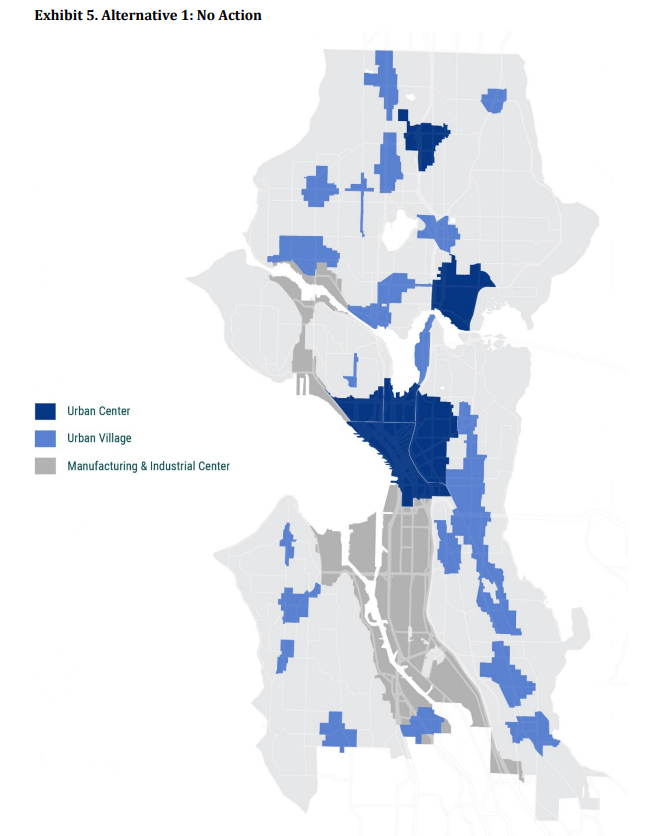
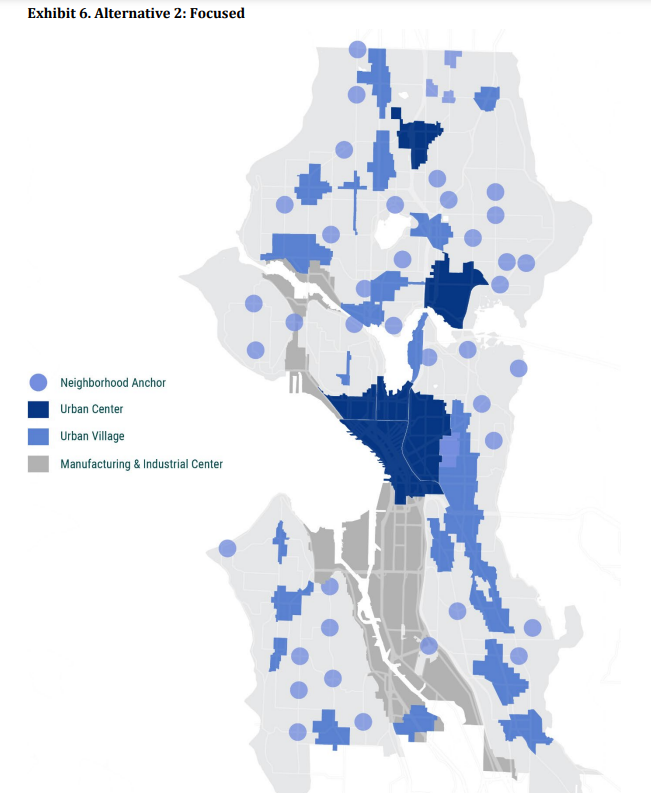
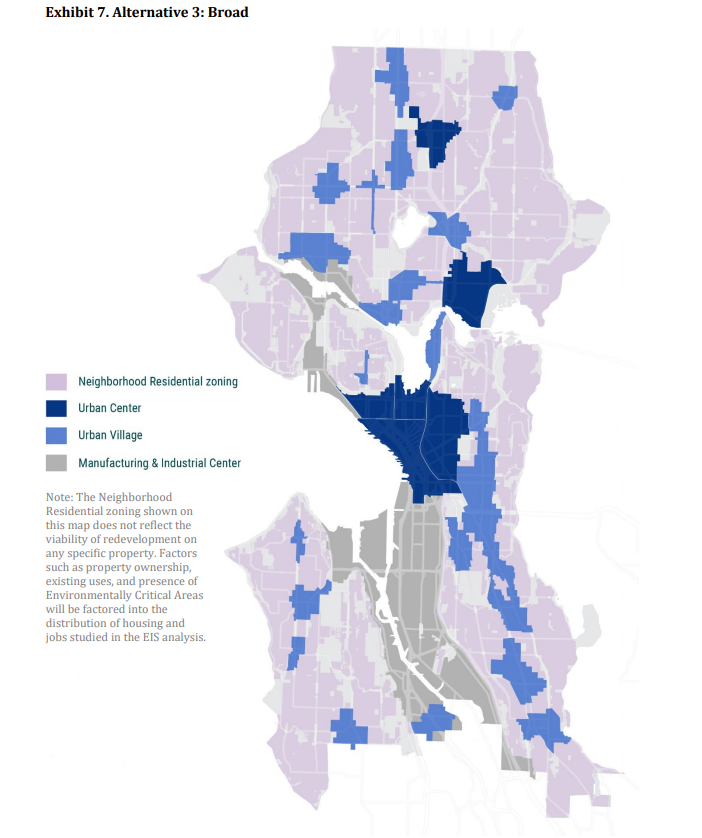
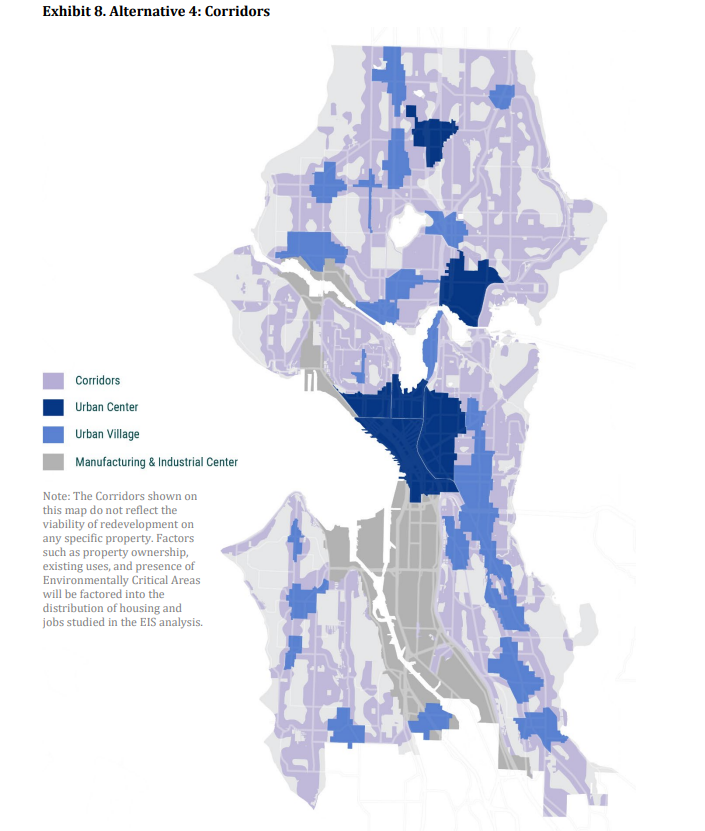
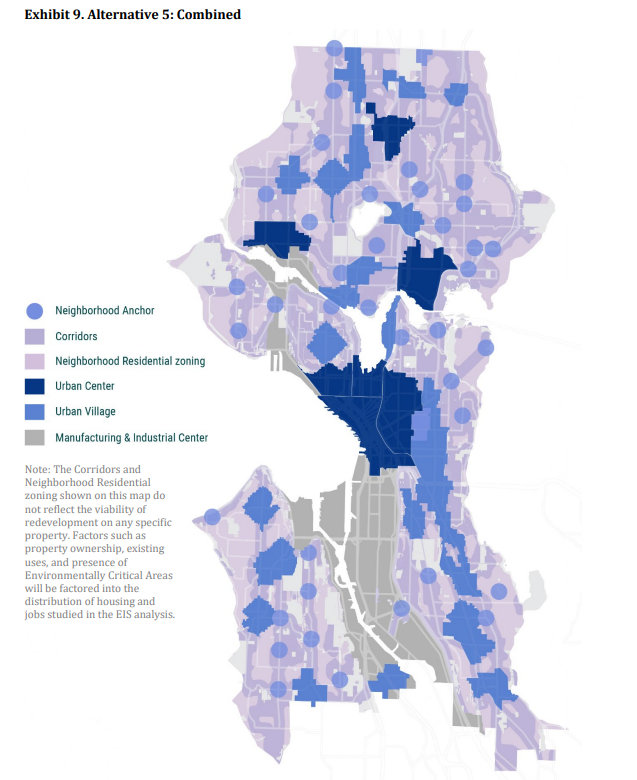
We’ve got a four alarm fire and the city is suggesting we think very hard about how many squirt-guns to bring to the fight. Worse, the whole thing looks like a setup for a totally arbitrarily defined “compromise” away from the top option and down to one of the do-nearly-nothing options. It’s hopelessly incoherent that the city treats #5 as a ceiling, not a floor, when #5 merely reflects what Seattle’s own planning commission recommended last year.
After the comment period got going, Share the Cities gathered a coalition that campaigned for “Option 6” – which rejected the limited range offered and demanded that the city focus its mind on actually addressing the problem. According to Share the Cities’ characteristically excellent documentation, about two-thirds of the comments the city received favored either option 5 or 6.
In fact, nearly 40% of all comments advocated for something more serious than the city had offered, pushing for policies that are ambitious enough to start to address the scale of our housing issues. Comments lumped into this category included those that advocated for Alternate 6 or higher, the end of exclusionary zoning, and the embrace of more than just missing middle housing. They included comments that demanded the right to build as much housing in every neighborhood as possible and to fund widely available social housing And they demanded the city move past just the “negative” impacts of new houses, but to also look at the environmental impacts of not building housing or of having to raze trees in the exurbs as a result.
In tallying the upvotes and downvotes on the city’s engagement hub, Share the Cities noted comments that fully meet the scale of the challenge got +9,379 net votes, while the most tepid options got -212 votes.
And yet the city came back with more of the same. Yes, it did slightly “beef up” Alternative #5, but it didn’t offer anything in line with the outcry for an Alternate 6. And it kept the urban village framework for all options on offer.
This is uniquely infuriating. OPCD is the very department responsible for creating this menu. OPCD is also the department that concluded last year: “the urban village strategy has not been able to mitigate the displacement of BIPOC residents because it perpetuates a land use and zoning policy that was specifically designed to limit their housing options.” And went on to state that Seattle should “move beyond tinkering at the margins of equitable neighborhood change.” In other words, the city’s planning department said urban villages perpetuate our racist housing history and yet somehow now it thinks we still should plan around urban villages.
Not to put too fine a point on it, but WTAF?
In his inaugural speech a mere 11 months ago, Mayor Bruce Harrell promised not to play “small ball.” Unfortunately, City Hall’s proposed alternatives are exactly that. This would be an ideal moment for the Mayor to step in and demand that his administration listen to its constituents and embrace expertise. This comp plan will have repercussions for decades to come.
Teresa Mosqueda gets it – she came to play. She spoke out this month in support of “a true Alternative 6 that would legalize more housing so we can tackle our city’s housing crisis.” Tammy Morales gets it too. Seattle is the biggest jobs center for a thousand miles in almost every direction and we have wasted decades following 1950s style policies.
Alex Pedersen doesn’t get it, and continues to offer glib, off the cuff word salads that promise another two decades of unaffordability and segregation. He offers the same ideas that dug such a huge hole that now only our millionaires have much money left in the bank after paying their rent or mortgage each month. Thanks to the growth-asphyxiating efforts of politicians like him, 30,000 of our neighbors experience homelessness every year.
Cities and states across America are taking decisive action to address the housing crisis, eliminating old rules that strangled housing construction, reinforced residential segregation, and made cities unaffordable. Those cities aren’t just doing the right thing — they’re also creating a competitive advantage for themselves, making it easier to become the next big jobs center, enabling families to make a home, and tackling the climate crisis.
Seattle must meet the moment and implement the changes that are needed – and that the people of Seattle want. I urge City Hall to unite behind an Alternative 6 that legalizes housing across Seattle and prioritizes aggressive investment in affordable housing, parks, transit and trees. It’s time for serious solutions, not weak repackaging of the same failed approach.

Ron Davis (Guest Contributor)
Ron Davis is an entrepreneur, policy wonk, political consultant, and past candidate for Seattle City Council. He is focused on making his community a place where anyone can start a career, raise a family, and age in place without breaking the bank. He has a JD from Harvard Law School and lives in Northeast Seattle with his wife — a family physician — and their two boys.



